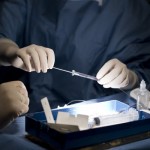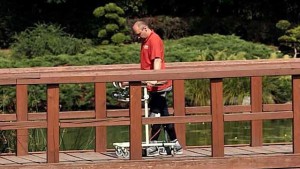Cell Transplants Are Giving Spinal Cord Injuries A Leg To Stand On

In 2014, Dr. Pawel Tabakow of Wroclaw Medical University and this team of surgeons performed the procedure that would change a man’s life forever. Spinal cord injuries have the ability to significantly impact a person’s life, requiring them to become dependent on their loved ones and preventing them from living to the fullest. However, all of that is about to change.
The Patient
In 2010, Darek Fidyka was stabbed repeatedly, severing his spinal cord and paralyzing him from the chest down. Doctors prescribed him intense exercise routines and physical therapy sessions, but his body wasn’t responding to the treatment.
This is the norm when it comes to spinal cord injuries. A traumatic blow causes bone fragments, ligaments, or vertebrae disc material to become displaced and tear into the tissue of the spinal cord. In most cases, the cord isn’t completely severed, but Fidyka wasn’t so lucky. He lost all of his sensory and motor functions below his chest, rendering him completely dependent on others for most of his everyday tasks.
The Discovery
Fortunately for Fidyka and millions of others spinal cord injury patients, a medical breakthrough was on the horizon. University College London’s Professor Geoffrey Raisman and his team were on the verge of a remarkable discovery. He, like many doctors, was frustrated that mammals’ central nervous systems weren’t built for regrowth unlike lizards, for example, that can grow a new tail if it’s been severed.
However, Raisman began considering the regenerative power of olfactory ensheathing glia (OEGs) which surround the olfactory nerve fibers responsible for sending electrical charges from our noses to the brain. As you can imagine, it’s a stressful job. The fibers have a lifespan of around six to eight weeks, but OEGs continuously provide a path for them to send their messages.
Raisman wondered what would happen if the OEGs could be transplanted into the damaged area of the spinal cord. He and his team conducted several successful trials on animals and, with that glimmer of hope, moved on to a human patient.
The Procedure

Fidyka’s procedure was fairly straightforward. Surgeons harvested cells from his olfactory bulb and then, using 100 micro-injections, were transplanted around the point of injury.
Eventually, the OEGs were able to provide a new pathway for severed nerve fibers to grow and join back together, effectively bridging the gap that caused Fidyka’s paralysis. This was previously thought impossible, but not anymore. Fidyka is slowly but surely regaining motor functions and sensations: walking with a frame, driving a car, etc. He has his life back.
The Future
Spinal cord injuries are often considered one of the most traumatic, life-altering injuries a person can experience. Even if a person is involved in a car accident that damages their spinal cord and files a successful suit against the other driver, all the settlements in the world can’t compensate for what they lose. The procedure opens up so many doors for victims of a serious personal injury like this, chief among them the possibility of regaining the ability to live their lives the way they want to.
